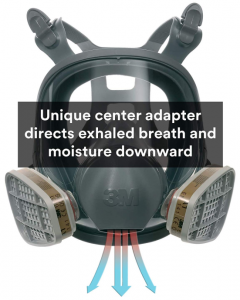- You are here:
- Home »
- Blog »
- Natural Solutions »
- Helping Seasonal Allergies With Natural Remedies and Nutrition (Part 1)
Helping Seasonal Allergies With Natural Remedies and Nutrition (Part 1)

April showers bring the lovely month of May’s flowers. It is a time of wake up and renewal after a long winter. Springtime….. the leaves in hiding finally begin to unfold turning trees from bare branches to green shade providers.
Flowers like the crocus pop up from bulbs in the now warming ground. Trees, bushes and flowers bloom.
But not everyone welcomes the spring.
Along with the regeneration of plants and flowers and the renewal activity of animals in nature comes something else – pollen and allergies. Devastating to the sensitive allergy sufferer who may plunge into a coughing or sneezing fit which can severely dampen their quality of life.
Is there a way to combat and overcome this uncomfortable torture that turns a time of natural enjoyment into a time of suffering?
Perhaps, the following post will give you a little more insight into what you may be able to with some natural solutions to help you find some relief.
What Causes Allergies?
Seasonal allergies, most active in the spring it seems, get their name from allergens. These are considered the triggers which can cause allergy symptoms, such as coughing, sneezing, runny nose, headaches, and even nausea.
The allergens can differ depending on the season, but these are some of the most common ones during spring and summer months:
Pollen
While spring is a time of year that is cherished by many and romanticized in art, new plant blooms that surface during that time of year turns out to be one of the largest contributors to allergies. This is a logical result of new plant blooms which produce high quantities of pollen.
Pollen is created by plants as a part of their reproductive system. As the pollen drifts through the air, it lands on other plants and fertilizes them.
It also lands on our parked cars creating a sticky layer of yellow which tells you how much of the stuff is floating around- and its ability to stay around once it lands.
Unfortunately, some people have allergic reactions (sometimes referred to as hay fever) to such heavy concentrations of pollen.
When allergic people they come in contact with the airborne pollen, their immune system interprets the presence of the pollen as an invasion. This can cause the body to launch an attack which releases hormones (histamines) that trigger the effects you feel when you are sick.
It’s those histamines that cause the reaction which is why allergy sufferers turn to anti-histamines to seek relief- which don’t always work.
Pollen allergies can cause you to experience symptoms like:
- Itchy eyes or throat
- Running nose
- Watery eyes
- Respiratory discomfort and more.
There are different types of pollen that can cause you to experience symptoms of these types, but not everyone is allergic to all of the types of pollen.
Some sufferers resort to wearing a dustproof mask to filter out the pollen for Running Cycling and Other Outdoor Activities or a mask with activated carbon filtration for not only running but gardening. house cleaning or just around the house during the most severe periods of pollen time.
Insects
Insects can also trigger an immune reaction. Proteins that make up the exoskeleton of insects like dust mites are reacted to by the body as a pathogen. If you breathe or come in heavy contact with these types of insects or their fecal matter, it will cause your histamine levels to skyrocket.
Insect related allergies are common, but many people don’t even know they are experiencing them. The most common type of insect associated with allergic reactions are dust mites. These little critters live in your home and feed on skin cells that collect around your bedding and in heavily trafficked areas like your carpet and upholstery.

Insect allergies are known to cause similar reactions to pollen allergies. They can also include breathing issues and skin irritations depending on your level of exposure.
Anti-allegen sprays are available that users claim work effectively and also said to be non-toxic to humans as well.
Mold
Another very common cause of allergy is mold. Molds can grow nearly anywhere there is a buildup of moisture, so as the months become warmer, molds can develop in hidden places around your home.
Molds create spores which can enter your lungs and produce irritation. Molds can be quite dangerous and require specialized treatment to eliminate them.
For example, a neighbor of mine kept getting skin rashes. She associated it with a medication she was taking and took it up with her doctor. No changes worked.
Finally, it dawned on her that her symptoms worsened every time she took a shower. She finally discovered that a plumbing leak had developed behind the dry wall in the shower which had been used to cover over the original plaster slat wall. A terrible mold had developed as a result.
She finally had to have the bathroom wall removed by a special crew and rebuilt to resolve the issue. The cause of the problem was mold.
Some molds are relatively harmless, but many can cause irritation in the throat and nasal area.
If you have allergy symptoms, mold can be a cause. Mold test kits are available which allow you to see what types of mold may be present in your home which could save you much time, allergy symptoms and money in the long run.
Reasonably priced DIY mold remediation kits are also available that are extensively reviewed and highly rated which can be tried first once you have identified the location and mold as the cause before requiring more costly professional remediation.
Be aware that this will require full face respirator’s to protect against the mold and the product vapor’s. The 3M full face respirator is recommended which can also be used for paint vapors and other chemical treatments.
Dietary Causes
Allergies can also be triggered by foods in your diet as well. One can develop an allergic reaction to common foods in your diet over time and not realize it until the allergic symptoms arise.
Common foods that cause allergic reactions are:
- Dairy products
- Sugars (concentrated sugars, not common carbohydrates- there is a difference)
- Even whole wheat or wheat products.
One can consume foods like these and not notice the impact unless you stop taking them for a trial period of time – Fourteen to 30 days is a good time period to judge from.
Not easy to do with a habitual food, but the first week is the most difficult as cravings and your habit consumption patterns are interrupted.
If you have persistent allergic symptoms that are not responding to other attempts to eliminate the symptom- take a look at your dietary consumption of the aforementioned foods and your diet in general.
- Do you consume any of the above foods regularly?
- Do you consume any other type of food regularly that may be a trigger?
For example, keep your eye on your response to spaghetti sauces. Commercial varieties can be made with tomatoes that are molding as a way of profiting from a food that should be discarded as spoiled.
The consumer may be getting mold spores or residues into their diet and not even consider the sauce as a source.
Your dietary awareness could be the answer as to the cause. Recognize patterns and then alter them for a reasonable period of time (30 days) to see if there is a correlation to the food and symptoms.
In part 2, we will take a look at 3 common myths and the real truths of allergies.
Read Part 2 – 3 Myths and Truths About Allergies You Need to Know
Related Posts
Should You Take Drugs to Cure COVID-19?
Free Survival Nutrition Course – 8 Hours Plus PDF
Is Holistic Oral Care a Forgotten Part of Your Natural Health Treatment Plan?
What’s For Dessert? Superfood Fudge
8 Common Herbs With Amazing Health Benefits
Four, No-Cost, Natural Life Hacks for Creating a Healthier Emotional State
Wall Street Journal Investigation Finds Dumpster Trash Food and Supplements Being Sold as New
Tackling Obesity Begins with Awareness and Ends with Action


